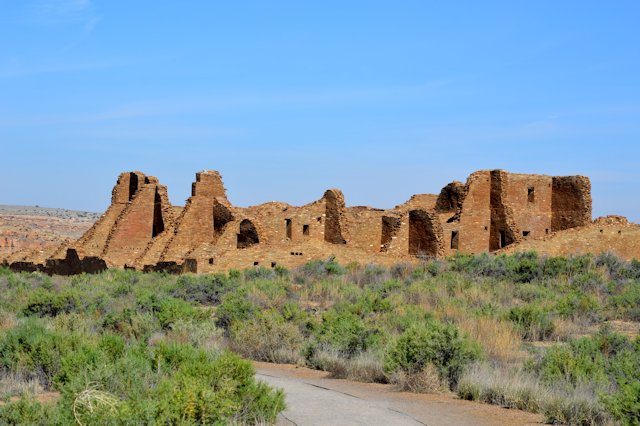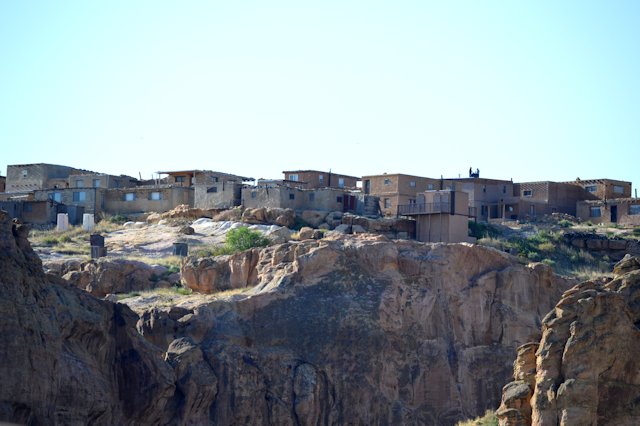In the northwest part of New Mexico is “The land of fire and ice” – the Bandero Volcano and Ice Cave. This is a privately owned piece of land that contains BOTH a volcano that erupted about 10,000 years ago spewing out lava in all directions as well as a lava tube containing an ice lake!
The volcano was very interesting. We hiked up into the blown out caldera where we took pictures showing the crater. The lava flows all around the trail were interesting, chunks of rocks just strewn around and some huge formations where lava bubbled up.
The ice cave was really cool – literally! The cave is an old lava tube that was blocked up not too far into the cave, and water poured into the cave and froze. The lava keeps the cave so well insulated that the frozen ice has never melted, simply growing new ice on the top as more water flows in. Now, the ice is about 20 feet deep and the ice at the bottom is 3,400 years old! The temperatur on the ice never goes above 31 degrees! It was a very warm day when we were there, probably mid 80s when we descended the 70 steps into the cave and every step got colder and colder. It was okay to stand on the viewing platform for a few minutes and then I started to really feel it. Most people only stay down there for 10-15 minutes, the owners told me. The owners are descendents of the Mexican family that discovered the place in the late 1800s and opened a trading post at the site. They were able to offer travelers through the area cold beer that they kept cold using ice from the cave. What a novelty at the time!
The trails to both the volcano and cave start from the trading post/visitors center and while the trip up to the volcan takes about an hour (you’re at 8,000ft so you go slow!) the ice cave is only about 10 minutes from the center. Easy to see both fire and ice at the same time!
Here are some pictures we took while there:



